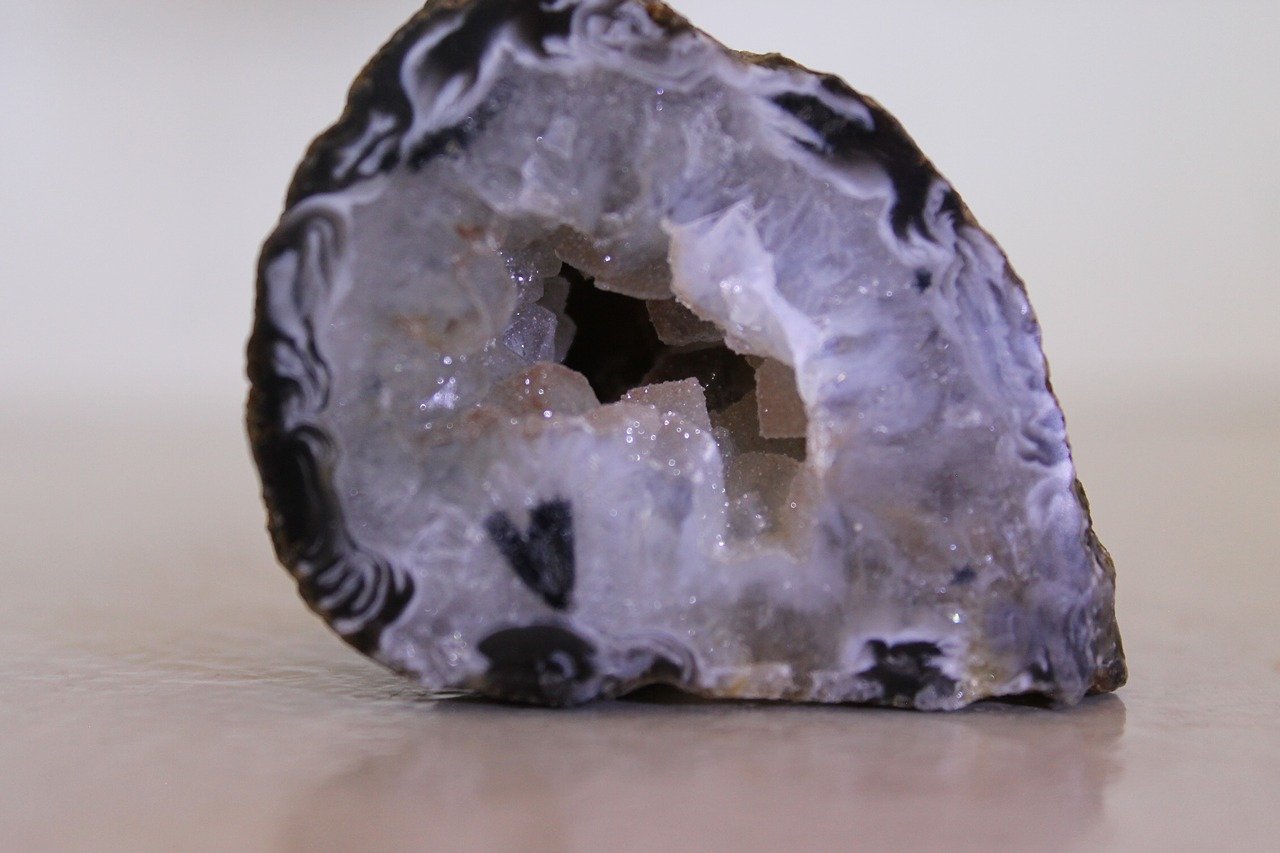The word geode has its origin in the Greek language, which means the shape of the earth or earth-like. These rich-looking stones are considered treasure houses of energy. People believe that geode possesses superior strings that connect with the earth’s gravity and water. These are spherical masses of natural minerals and have a distinct appearance. The dense filling of the geode makes it solid. These densely filled geodes are known as nodules. Geodes have strong walls for maintaining the initial shape. However, you can separate it from the matrix. The outer layer of the mineral is so strong that it resists weathering and other climatic conditions.
How do geodes form?
There are two processes involved in the formation of geode. The first one is fossilization. The second process gets linked with limestone caves surrounded by an underground river. The continuous piling up of the mineral over time finally leads to the formation of geodes. The crystalline lining is what makes the geode resistant to weathering. It is a gradual process occurring over millions of years. Apart from this, volcanic activity also leads to the formation of geodes.
How can you differentiate geodes?
The categorization of these rocks got based on two aspects:
• By formation
• By crystals it contains.
Let’s take a look at the classification of geodes by their formation.
Volcanic geodes
One of the most common geodes people know of is volcanic geodes. They came into existence because of a volcanic eruption. The magma erupting from the volcano contains a percentage of minerals and gas. Groundwater or hydrothermal water erodes and then delivers the minerals such as quartz, Agate, or Opal. Over time, the mineral deposits and develops into the longest and largest geodes.
Sedimentary geodes
You will find sedimentary geodes in limestone and dolomites. As organic material like tree branches, bodies, and roots decay gradually becomes solid. The void space is filled with gasses and later deposited with natural minerals like open quartz, carbonate minerals, and agate. These geodes are smaller in comparison to volcanic geodes. You can find these easily due to the weathering process. The formation of the host mineral depends on dolomite, limestone, shell, and basalt. Due to the weathering process, the outer layer slowly withers away. The resultant is the sedimentary geode. These geodes can help in bringing out stunning decorations.
You will find different professionals using a range of geodes for distinct aesthetic purposes. Homeowners use these extensively for increasing the overall appeal of their living space. People also use it as holiday geode home decorations to elevate home aesthetics.
Professionals experiment with different categories of geodes to provide you with aesthetic artwork. Each has its distinct appearance and properties, whether it is amethyst geodes, quartz geodes, or calcite geodes. With a sparkly and hollow appearance, these unique stones can sharpen and balance the appeal of the space. They are a viable source of positive energy that can influence your life and surroundings. You can choose the one that fits your budget and is appealing.








